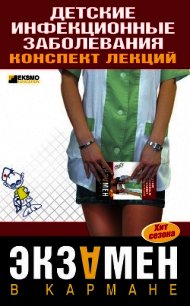Английский язык для медиков: конспект лекций - Беликова Елена (книги хорошего качества TXT) 📗
ЛЕКЦИЯ № 4. Dermis
Dermis is a connective tissue layer of mesodermal origin subjacent the epidermis and its basement membrane. The dermis-epidermal junction, especially in thick skin, is characterized by numerous papillary interdigitations of the dermal connective tissue and epidermal epithelium. This increases the surface area of attachment and brings blood vessels in closer proximity to the epidermal cells. The epidemis, like epithelia in general, is devoid of blood vessel. Histologically, der-mis consists of two identifiable regions.
Papillary layer, associated principally with the dermal papillae, is the most superficial layer. It consists of a loosely packed, irregular meshwork of collagen fibrils that contain fine blood vessels and nerve endings.
Reticular layer is the deeper dermal layer and consists of coarse collagen bundles intertwined with elastic fibers in a gel matrix. This layer is a typical dense irregular connective tissue.
HYPODERMIS: this layer of loose vascular connective tissue is infiltrated with adipocytes and corresponds to the superficial fascia of gross anatomy. However, since it contains the deepest portions of the cutaneous glands and hairs, it is also an important part of the skin. The hypodermis fastens the skin to underlying muscles and other structures.
New words
dermis – дерма
connective – соединительный
membrane – мембрана
junction – соединение
to be characterized by – характеризоваться чем-то
numerous – значительный
to increase – увеличивать
surface – поверхность
area – площадь
bring – приносить
to consists of – состоять из
to contain – содержать
collagen – коллагеновый
Если перед существительным употребляется прилагательное, оно стоит между артиклем и существительным.
E. g. This is a book. This is a good book.
Вставьте артикль, где необходимо
1. We have… large… family.
2. My granny often tells us… long… interesting… stories.
3. My… father is… engineer. He works at… factory… factory is large.
4. My… mother is… doctor. She works at… large. hospital. She is at… work now.
5. My… aunt is… teacher. She works at… school… school is good. My… aunt is not at… school now.
6. She is at… home. She is drinking… tea and eating… jam… jam is sweet.
7. I am at home, too. I am drinking… tea and eating… sandwich… sandwich is tasty.
8. My sister is at… school. She is… pupil.
9. My cousin has… big… black… cat. My cousin's… cat has two… kittens.
10… cat likes… milk… kittens like… milk, too.
11. I am… engineer.
12. My… son is… pupil.
13. He is… good… pupil.
14. This is… house.
15. This is my… pencil.
16. You have some… pen cils, but I have no… pencil. Give me… pencil, please.
17. I like your… beautiful… flower. Give me… flower, please.
18. My… mother is at… home. She is reading… interesting… book.
19. My… father is not at… home. He is at… work. He is… doctor.
20. He is… good… doctor. He works at… hospital… hospital is large.
Answer the questions.
1. What is dermis?
2. What does dermis consist of?
3. What is the dermis-epidermal junction characterized by?
4. What increases the surface area of attachment?
5. What is the epidemis devoid of?
6. What is principally associated with the dermal papillae?
7. What is reticular layer consists of?
8. What is typical dense irregular connective tissue?
9. What does epidermis consists of?
10. What contains the deepest portions of the cutaneous glands?
Make the sentences of your own using the new words (10 sentences).
Find the definite and indefinite articles in the text.
Find one word, which is a little bit different in meaning from others (найдите одно слово, которое немного отличается от других по смыслу):
1) a) skin; b) knife; c) dermis;
2) a) fire; b) membrane; c) cell;
3) a) connective; b) collagen; c) table;
4) a) nose; b) book; c) mouth;
5) a) ear; b) throat; c) skirt.
ЛЕКЦИЯ № 5. Cutaneous appendages
Cutaneous appendages are all derivatives of the epidermis.
Eccrine (merocrine) sweat glands are simple, coiled, tubular glands that are widely distributed over the body. Secretory portions are tightly coiled and consist of a single layer of columnar-like pyramidal cells. They extend deep with in the dermis or hypodermis, where they are surrounded by myoepithelial cells, which aid in the discharge of secretion by contraction.
Duct portions, composed of two cuboidal cell layers, are corkscrew-shaped and open onto the epidermal surface. The luminal diameter of the duct is less than that of the secretory coil. These glands are important in thermal regulation. When hypotonic sweat is released onto the body surface, heat is lost by water evaporation.
Control of the eccrine glands is mainly by the innervation of choli-nergic fibers.
Apocrine sweat glands are also simple, coiled, tubular glands but are much less abundant in their distribution than eccrine glands. They can be found in the axillary, areolar, and anal regions.
Secretory portions of these glands are composed of a single layer of cuboidal or columnar cells. They are larger and have a much wider luminal diameter than eccrine sweat glands. Myoepithelial cells surround the secretory cells within the basement membrane and contract to facilitate secretion.
Duct portions are similar to those of eccrine sweat glands but open onto hair follicles instead of onto the epidermal surfaces.
Functions of these glands in humans is not at all clear. In other mammals, apocrine sweat glands are widely distributed over the body and serve a variety of functions related to olfaction and behavior. Specialized apocrine glands in the ear canal (ceruminous glands) produce a secretion in conjunction with adjacent sebaceous glands to form the protective earwax (cerumen). Apocrine sweat is normally odorless when secreted but becomes noticeable due to the activity of cutaneous bacteria. Control of the apocrine glands is hormonal and via the innervation of adrenergic fibers. These glands do not begin to function until puberty.
Sebaceous glands are simple, branched holocrine acinar glands. They usually discharge their secretions onto the hair shaft within hair follicles. These glands are found in the dermis throught the skin, except on the palms and soles.
Secretory portions consist of peripherally located, flattened stem cells that resemble basal keratinocytes. Toward the center of the acini, enlarged differentiated cells are engorged with lipid. Death and fragmentation of cells nearest the duct portion result in the holocrine mechanism of secretion.
Duct portions of sebaceous glands are composed of stratified squamous epithelium that is continuous with the hair cat and epidermal surface.
Functions involve the lubrication of both hairs and cornified layers of the skin, as well as resistance to desiccation.
Control of sebaceous glands is hormonal. Enlargement of the acini occurs at puberty.
Hairs are long, filamentous projections consisting of dead keratini-zed epidermal cells. Each hair derives from an epidermal invagination called the hair follicle, which possesses a terminal hair bulb, located in the dermis or hypodermis, from which the hair shaft grows. Bundles of smooth muscle cells, called arrector pili muscles, are attached to the hair follicle at one end and the papillary dermis at the other. Contraction of these muscles raise the hairs and dimple the epidermis («goose flesh»). The follicles and associated sebaceous glands are known as pi-losebaceous units.




